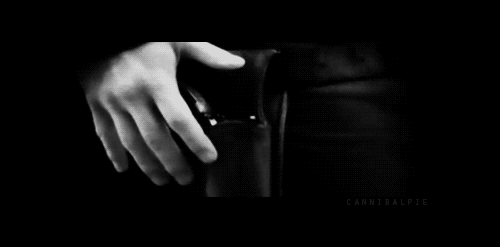S.C.I.D.
Pagina 1 van de 1
- carola
-

- Berichten: 8685
- Geregistreerd: 18-04-01
- Woonplaats: Putten
- Himyar
-

- Berichten: 4538
- Geregistreerd: 14-08-01
- carola
-

- Berichten: 8685
- Geregistreerd: 18-04-01
- Woonplaats: Putten
- DubbelFun
-

- Berichten: 88617
- Geregistreerd: 12-04-01
- Woonplaats: 1 km van het midden van Nederland
SCID = Severe Combined Immunodeficiency
Within the last 25 years a new disease among Arabians has been discovered, researched, debated, and comprehended. This is Severe Combined Immunodeficiency Disease, or SCID. The disease is genetic, and affects Horses with Arabian blood.
SCID affects the immune system by disabling the production of antibodies. Foals first receive antibodies immediately after birth by drinking the antibody rich milk from their dam. This milk is called colostrum. Since a dam only produces a limited amount, foals must begin creating their own antibodies after their mother's supply runs out. In foals born with SCID, they cannot produce their own. A sort of glitch in their genetic code tells the infected foal's body not to produce the antibodies. This leads to certain death because they cannot fight off any kind of infection.
Another affect of SCID is its attack on the horse's B cells. B cells should be able to change their make-up to be any antibody the horse might need. In order to do this, they must first recognize what type of virus it is. The variable region of the B-cells allows this to happen. It detects the type of invader, figures out the needed antibody, and let's the horse's body know how it needs to reassemble the genes. In horses with SCID the variable region is abnormal. It cannot detect the type of invader, and therefore has no way of getting rid of it.
Breeding horses with Arabian blood is done very cautiously. Since the gene responsible for SCID is recessive, both parents must have it present. Even if a carrier horse is bred with a normal horse, about 1/2 of the offspring will be carriers. If two carriers are bred, 1/4 will be infected and die, 1/2 will be carriers, and 1/4 will be neither effected nor a carrier.
Luckily a test has been developed. Scientists recommend that all horses with Arabian blood be tested. It tests to see if a horse has the gene that causes SCID. It can tell if a horse has the disease, is a carrier, or is unaffected. If the horse is infected, it will certainly die. If the horse is not affected at all, then it can be bred normally. If the horse is a carrier special precautions are taken. They can still be bred, but not to other carriers.
Some people ask, "Why not just weed all the carriers out of breeding?" The reason for this is that it gets rid of good traits along with the bad. Scientists also say that weeding out a recessive trait can also lead to another recessive trait coming up.
The first case of the disease was found in just 1973. Since then many developments have happened. This can keep the breeding field wide, and still narrow out the disease. With the development of the test, breeding can be carefully monitored, saving lives of foals that might die if the test had not been discovered.
Breeding examples:
Normal horse - Does not have the gene and is unaffected by the virus
Carrier horse - Has the gene but does not show signs and will not die of the disease
Infected horse - Has the gene and is assured certain death
These examples are for mares producing 4 foals. They do not necessarily come in this order. The infected horse could be the first foal born to that mare.
Carrier + Normal = 2 normal and 2 carriers
Carrier + Carrier = 1 normal horse, 2 carriers, and 1 infected horse
- Adrienne
-

- Berichten: 1535
- Geregistreerd: 10-04-01
- Woonplaats: Geldrop
SCID is in het nederlands: ernstige gecombineerde immuundeficientie. Ik moet eerlijk zeggen dat ik niet wist dat dit bij paarden ook voorkomt. Ik ken het alleen uit de humane geneeskunde. Ik doe nl onderzoek aan de genetische afwijking van dit ziekte beeld bij mensen. Ik kan dus alleen uitleggen wat het bij mensen voor gevolgen heeft, maar ik neem aan de paarden het zelfde beeld vertonen.
Kinderen van ouders waarvan 1 of beide drager zijn van de afwijking groeien in de eerste weken gewoon op net als elk ander kind. Pas op het moment dat de bescherming van moeders doorgegeven antistoffen niet meer voldoende is of bv op het moment dat zo'n kind tegen een vekoudheid oploopt gaat het gruwelijk mis. Hun afweer is helemaal verstoord. Hun witte bloedlichaampjes en dan met name hun B en T cellen functioneren niet of niet goed. De infectie kan dus niet worden bestreden en het kind sterft als er niet wordt ingegrepen. In het geval van mensen wordt er een beenmerg transplantatie gedaan of gen therapie toegepast.
Bij mensen zijn er in elk geval 2 verschillende oorzaken bekend. ! is de XSCID (= x linked SCID) dat wil zeggen dat het een x gebonden ziekte is. Dat heeff tot gevolg dat alleen jongetjes de ziekte kunnen krijgen (jongen XY meisje XX) een meisje heeft altijd een X die niet aangedaan is en die neemt alle fuktie over. Een jongetjes Y is leeg dus als hij een zieke X krijgt is wordt hij altijd ziek. De andere vorm is een fout in een eiwit wat JAK-3 heet dit kan bij jongens en meisjes voorkomen. Of er bij paarden ook de twee vormen voorkomen weet ik niet.
Ik hoop dat iedereen het kan volgen anders moet je me maar gewoon vragen het beter uit te leggen.
Adrienne
"We can't actually drop it off at an orphanage, they might get upset when it turns Asian." Dean Winchester.
Pagina 1 van de 1

